Dohne Handbook
“The Dohne Merino is responsible for the improvement in the maternal characteristics of the Australian sheep flock.”
FOREWORD
Sheep versatility and profitability at its best
Australian Dohne Merinos are a well balanced and versatile breed producing a stylish white apparel wool and a fast growing prime lamb.
Red meat requirements are increasing globally due to the improved living standards in areas such as Asia and the Middle East. Red meat producers are under pressure to vertically integrate their production systems to meet the demand, without radical change to current sheep production enterprises.
Genetically, the Australian Dohne Merino is the only breed that possesses the ability to achieve this genetic improvement, enhancing fertility and early growth rates, which leads to rapid product turn off and better gross margins per hectare.
Modern objective breeding techniques coupled with stringent subjective classing to maintain breed standards have been the foundation of the Dohne’s success.
The Dohne’s influence over the national sheep flock during the last 25 years has been profound. The Dohne is responsible for the change in the make and shape of the Australian Merino.
This handbook explains how the Dohne was developed, the Dohne advantages and the Dohne breeding system and philosophy.
HISTORY
1938 – 2023
Dohne sheep have been ticking all the boxes since their inception in South Africa in 1938 and introduction to Australian in 1998.The aim of the Dohne has been well defined, with the breeding objective to improve meat, wool and reproductive traits.
The initial cross was between a Peppin Merino and the German Mutton Merino. This was a “one-off” cross and progeny were interbred and selected for high fertility, rapid lamb growth, mothering abilities and the production of quality Merino wool.
In Australia the Dohne presented a perfect alternative for sheep producers. With an emphasis on meat and wool traits, the true dual-purpose sheep had arrived. It provided an alternative to the fine or medium wool Merinos, and specialist prime lamb breeds or composites that have been traditionally used in sheep enterprises.
The maternal qualities of the Dohne ewe proved perfect for Australian conditions. They are survivors; resilient and fertile. They are natural mothers who rear high performance lambs and produce quality apparel Merino wool.
Full pedigree and modern,
objective breeding techniques, coupled with stringent subjective classing to maintain breed standards have been the foundation of the Dohne’s success. The following economic traits are recorded:
• Body weight at weaning and post weaning.
• Wool weight and fibre diameter at post weaning.
• Eye muscle depth and fat depth at post weaning.
Ethically, as an apparel wool producer, the Dohne stands alone with a natural bare breech eliminating the need for mulesing.
The Australian breed society, formed in 2000, has overseen the breed’s recognition as a modern, mules-free, plain-bodied, productive, profitable and adaptive sheep breed for the Australian farmer.
The Dohne is known for its subjective and objective benefits, high fertility, rapid growth rates, hardiness, quality apparel wool, bare breech and ASBVs.
The popularity of the breed has seen the Dohne spread to South America, New Zealand, Russia, North America and China.
DOHNE ADVANTAGES
The Dohne is the best path to a self-replacing mules-free flock, with quality meat and wool production.
- Self replacing polled flock
- Early maturing prime lambs
- Quality apparel Merino wool
- High fertility
- Plain bodied / open faced
- Bare breech / mules free
- High fecundity and exceptional mothering ability
- High weaning percentages and survival rates
- Adaptable to varied environments, including harsh conditions and pastures low in protein
- Non seasonal breeders / up to 70% will rejoin with lambs at foot
- Full pedigree and performance recording
- Longevity
MEAT
- Lean and high yielding carcasses
- Even fat distribution
- Lambs with gains of up to 450 grams per day make the Dohne popular with grass finishers and lot feeders
- Market flexibility – trade or export weight carcasses
Wellington New South Wales 2013 hoof & hook competition winners, Dohne cross lambs. Carcasses judged on saleable meat yield and intramuscular fat.
Photo courtesy of The Land (Rural Press)
WOOL
- Dohne wool is AWEX accredited and categorised as Merino wool
- The Dohne averages 5-6kgs of 18-21 micron quality apparel AAAM
- Dohne wool has exceptional coefficient variation and comfort factor
- Staple length 90-110mm with some Dohne producers shearing every 8 months
FERTILITY & MOTHERING ABILITY
Exceptional mothering abilities of the Dohne make them capable of rearing multiple progeny under all production systems, with maiden ewes lambing in the autumn achieving up to 120%.
- Fecundity
- Excellent milk production
- Non seasonal breeders
- Lambing ease
- High libido
DISTRIBUTION
The variation in Australian climates from the mild wetter regions of the southeast to the hot and dry outback interior provides the perfect platform to display the adaptability and durability of the Dohne breed.
- The Dohne has the ability to convert inferior vegetation into sustainable products
- The Dohne has the ability to perform well above the average of species under adverse conditions
- The Dohne has been used extensively over Merino and Corriedales in New Zealand, Uruguay, Chile, Argentina, Peru, Falkland Islands and Russia
VERSATILITY
How the Dohne compliments other breeds…
AUSTRALIAN SHEEP BREEDING VALUES (ASBVs)
The Dohne: Embracing modern up to date performance breeding strategies
- ASBVs are a projection of how the traits of an animal’s progeny will perform
- The ASBVs are derived from recording the full pedigree and performance of an animal
- The national database allows Dohne sheep from large and small registered stud flocks to be directly compared
As a commercial breeder, how can I use a ram’s ASBVs to improve my flock’s performance?
- Define your breeding objectives for each trait for your flock
- Use the ASBVs to compliment the visual assessment of a sheep
- Select rams with ASBVs that enhance your breeding objectives
ASBVs – Continual genetic improvement
With the use of ASBVs and subjective (visual) classing the Dohne has continued to improve.
Registered Dohne Breeders are continuing to strive for increased profitability on a commercial basis.
Since coming to Australia, Dohne rams have improved 30% (New South Wales DPI independent evaluation), refer to graph below.
Through compliance of all compulsory recordable traits, Registered Dohne Breeders will continue genetic improvement into the future.
ASBVs – What does it all mean?
Weaning Weight (WWT): heritability : moderate 20%
- All lambs are weighed between 42 and 120 days of age (ideally 100 days)
- This weight reflects the mothers’ milking ability and maternal characteristics
- A higher WWT will highlight the early maturing lambs and give a commercial breeder the opportunity to reach target weights earlier
Faster Growth = Increase in Profit
Post Weaning Weight (PWT): heritability : moderate 30%
- Lambs are weighed between 210 and 300 days of age to achieve commercial objectives of turning lambs off earlier, indicating a better feed conversion ratio
- This weight is representative of the lamb’s ability to grow without their mothers’ influence
- Lambs that reach target slaughter weights as quickly as possible are more profitable
Earlier Maturity = Greater Profitability
ATTRIBUTES OF THE TYPICAL DOHNE
DOHNE PRODUCTIVITY
Dohne productivity versus other breeds





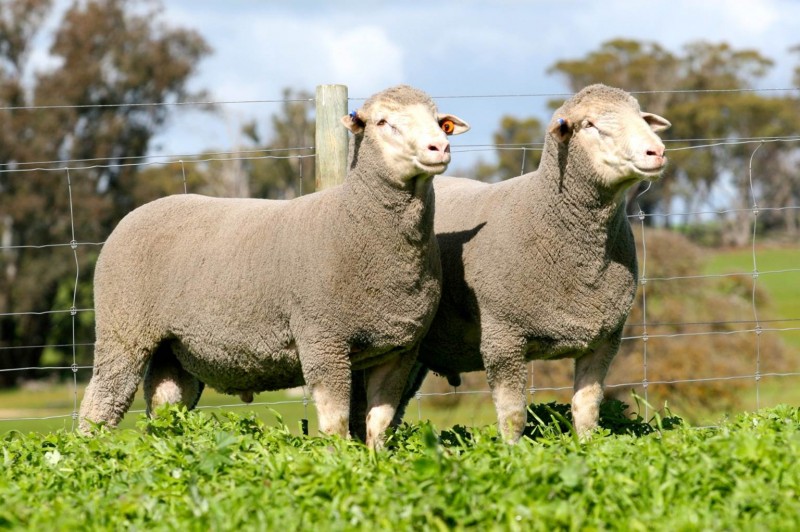

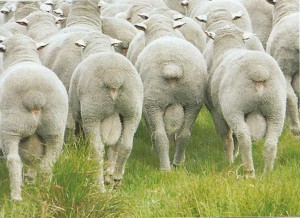
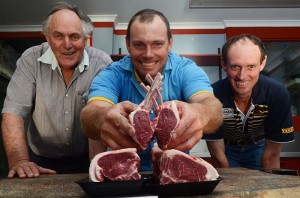
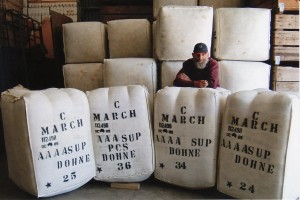

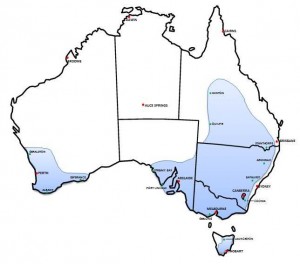




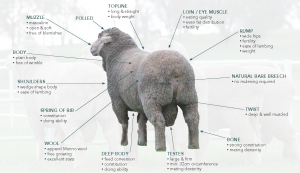






 Facebook
Facebook YouTube
YouTube Instagram
Instagram